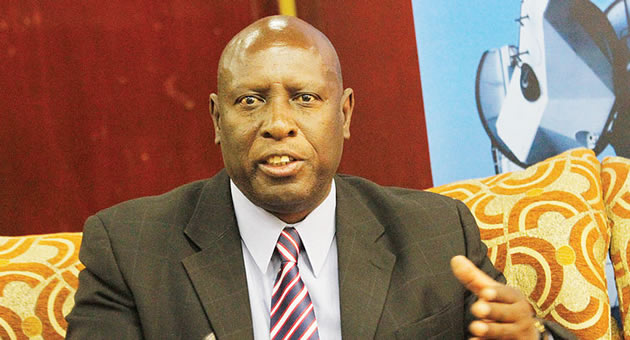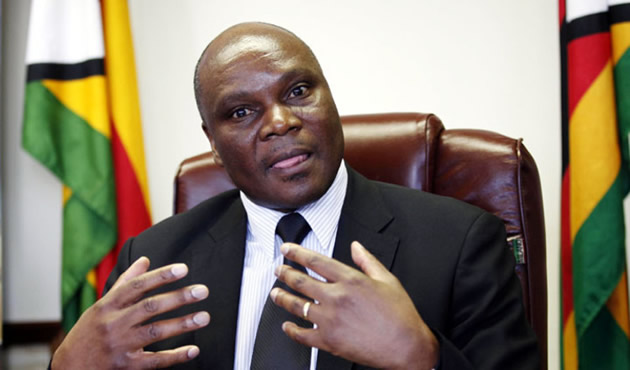Govt seeks energy framework with SA

Golden Sibanda Senior Business Reporter
GOVERNMENT is seeking an official framework with South Africa to structure energy deals, secretary for Energy and Power Development Partson Mbiriri has said. An agreement in principle was reached between Energy and Power Development Minister Samuel Undenge and his South Africa counterpart Tina Joemat-Pettersson last month although no timelines have been indicated yet on when the pact should be in place.
Mr Mbiriri said the two ministers will sign a Memorandum of Understanding, informed by the fact that South Africa and Zimbabwe share many things, which include electricity, fuel and infrastructure.
He said that there is recognition of the fact that while the neighbouring trading partners have been sharing a lot in the energy sector, most of it has been happening outside an official framework.
“It was the decision of the two ministers when they met last month that there be a framework on the basis of which we then can explore various avenues. South Africa, for example, is way ahead in terms of renewable energy, in particular solar,” Mr Mbiriri said.
“There is a lot we can learn from South Africa. They are way ahead in terms of solar geysers and we want to roll out a similar programme here and there is a lot that we can learn,” Mr Mbiriri added.
The energy secretary said, surprisingly, despite Zimbabwe chronic economic problems, there is a lot that Zimbabwe can offer to its biggest trading partner from a technical point of view.
“Had the deficit we had happened in other jurisdictions, the grid would have collapsed, but we were able to keep the grid alive for many years and certainly South Africa would want to share notes with us, essentially from a technical perspective,” he said.
Further, Mr Mbiriri said all of Zimbabwe’s power stations are functioning while South Africa had a few, including fairly new one, which either not working too well or a completely grounded.
“Really, the intention is that we share notes, not necessarily reinvent the wheel and that we mutually support each other.” Zimbabwe is importing 100 megawatts from Mozambique and recently concluded an agreement with South Africa’s Eskom for the supply of a further 300MW as and when it has excess power.
Government is pursuing possibility of additional power supply from Electricidade de Moçambique (EDM) as the power from the Mozambican power utility is relatively cheaper than that of Eskom.
The agreement with the South African power utility is, however, not firm, meaning Eskom can reduce supplies to Zimbabwe if demand in that country goes up and there is little or nothing to spare. Power imports from South Africa also come with another challenge, as Eskom requires Zimbabwe to pay for the power in advance.
This partly explains why Government is keen on an MoU with Pretoria, such that future energy deals, especially power supply, are entered at Government level in order for Zimbabwe to secure lower tariff deals.
“That power is not coming cheap, it is more expensive than our locally generated power and one of the reasons why we need this MoU is to be able to enter into Government to Government negotiations about what we share and at what cost,” Mr Mbiriri said.
Zimbabwe is using the imported power from South Africa to meet its requirements during off peak periods and then take advantage of that to switch off Kariba South, which has had its generation levels reduced due to the low lake water levels this year. This allows Zimbabwe to conserve water allocation for Kariba South, which it can then use during periods of peak demand for power.
Mr Mbiriri said the decision to import power from South Africa was occasioned by the challenge at Kariba South, as “we had to fill up that gap, somehow”. “So, that arrangement, (of importing power from SA) still obtains. One of the things about the arrangement also is that we pre-pay for that power and sometimes it is not easy to pre-pay, you are talking about a couple of millions for it to be meaningful.
Zimbabwe has had to augment its limited locally generated power with imports, to bridge the deficit between demand and supply after years of no investment in new generation capacity since the mid 80s.
Currently, Zimbabwe generates an average of 1 050MW, but with peak period demand of 2 200MW, the country faces serious shortages, which is being met through imports from the regional utilities.









Comments